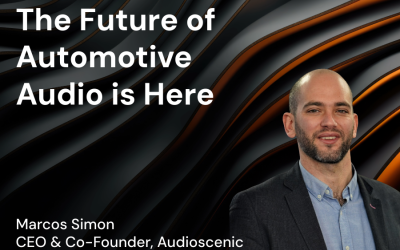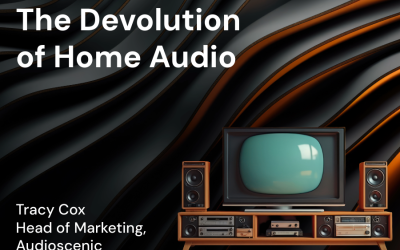So Long, Surround Sound
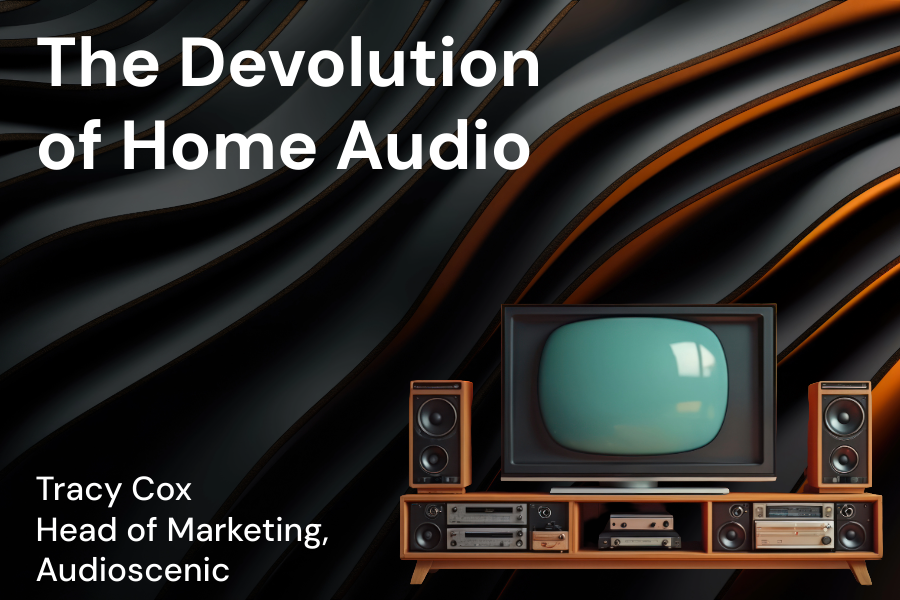
Tracy Cox, Head of Marketing, Audioscenic
Surround sound was a revolution when it arrived in the 1980s. Suddenly, you joined your silver screen heroes in jumping at the sound of an explosion which, to you, felt as though it was right behind your sofa. Dolby Atmos then promised an even richer experience for home users from 2016.
Despite the impact of surround sound and Atmos, for years we have seen an increasingly rapid decline in these complex multi-speaker systems. It shouldn’t be a surprising trend. In an increasingly wireless world, they very much aren’t. Systems can be expensive, require decent technical knowledge to set up correctly and even then, they’ll deliver just a single sweet spot of wondrous sound.
Since surround sound first hit the mainstream market in the mid-1980s, TVs have lost their cathode ray tubes, becoming smaller and sleeker while gaining an ungodly amount of resolution and a world of new features. They’ve become the stuff of the 1980’s sci-fi their ancestors were showing.
You’d be forgiven for thinking that audio technology has stalled by comparison in this time frame. The few who have moved to a full home cinema set-up will feel the benefit of these 40 years of innovation in home audio. But the rest of us? The overwhelming majority? We’re mostly relying on speakers built into our flat screen or on soundbars. We’ve gone backwards and we’ve become desensitized to the experience – settling for “good enough”.
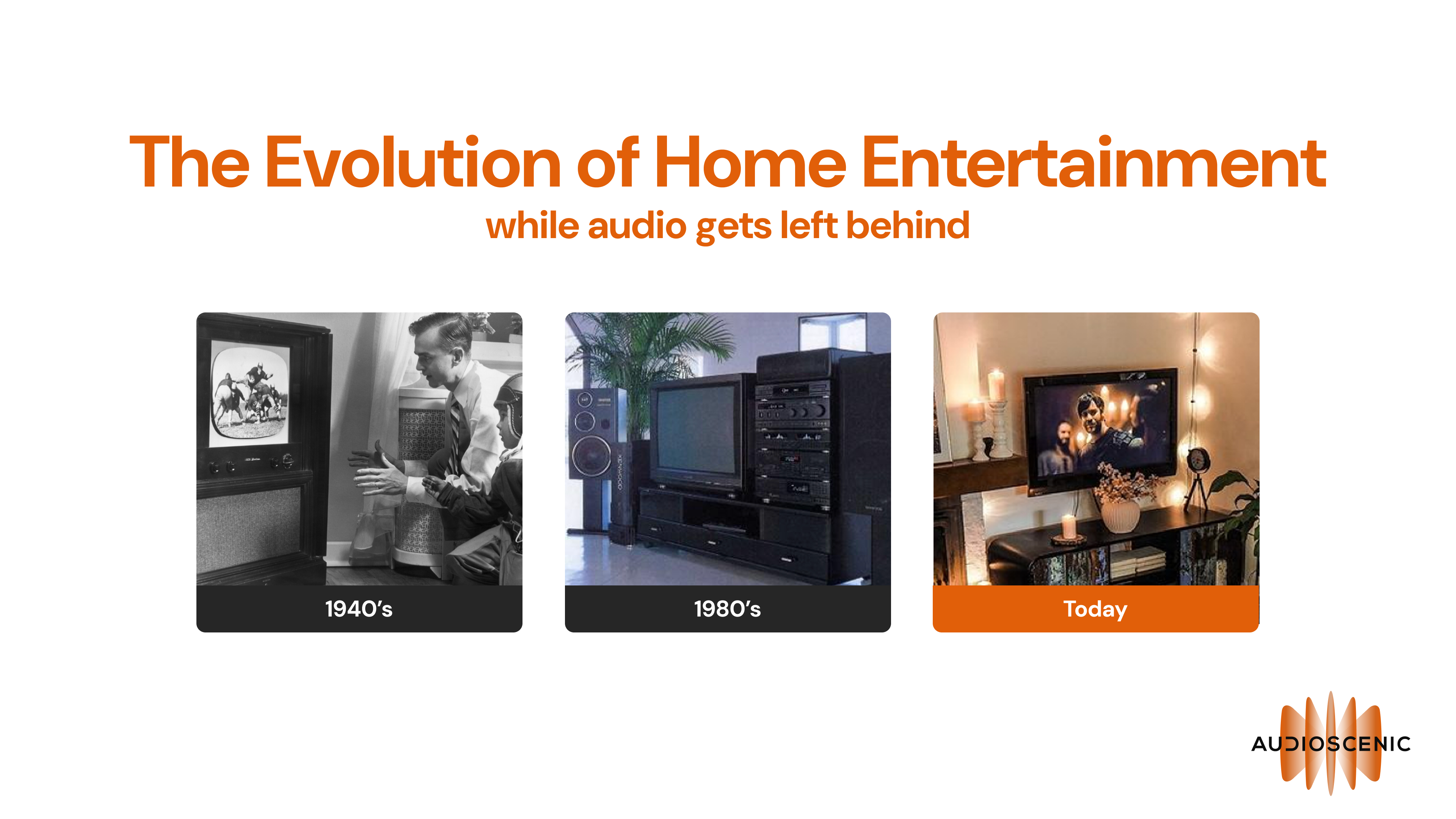
Spatial: The Revolution in Home Audio
Spatial audio has been around for a while too, with Apple AirPods alone bringing tens of millions to the party. Coupled with the main streaming platforms moving to support spatial, there is an upswell in awareness in the mass market. And a dizzyingly sharp increase in searches around “what is spatial audio?”.
To answer that question as simply as possible: Rather than having a finite number of discrete channels of sound, defined by the number of speakers in your system, as surround sound does, spatial audio delivers sounds exactly as we hear them in real life, with an infinite set of audible dimensions and positions.
If you think of surround sound painting a picture on the walls around you in two dimensions, spatial audio builds a 3D audio hologram which encompasses you.
BUT where traditional soundbars and fixed speakers fall down in delivering a meaningful spatial audio experience is that they’re restricted to only painting this audio hologram in a fixed position. Move or rotate your head from front and centre, and the illusion is lost.
At Audioscenic, we believe that the revolution only really starts when this limitation disappears, and we’re working to tear it down. With unique patented technology, Audioscenic spatial speakers beam two separate streams of sound, one into your left ear, one into your right ear – with the streams moving and the rendering of the audio adapting in real time to your movements.
The 3D hologram of sound has become a personal bubble or sound helmet that moves with you.
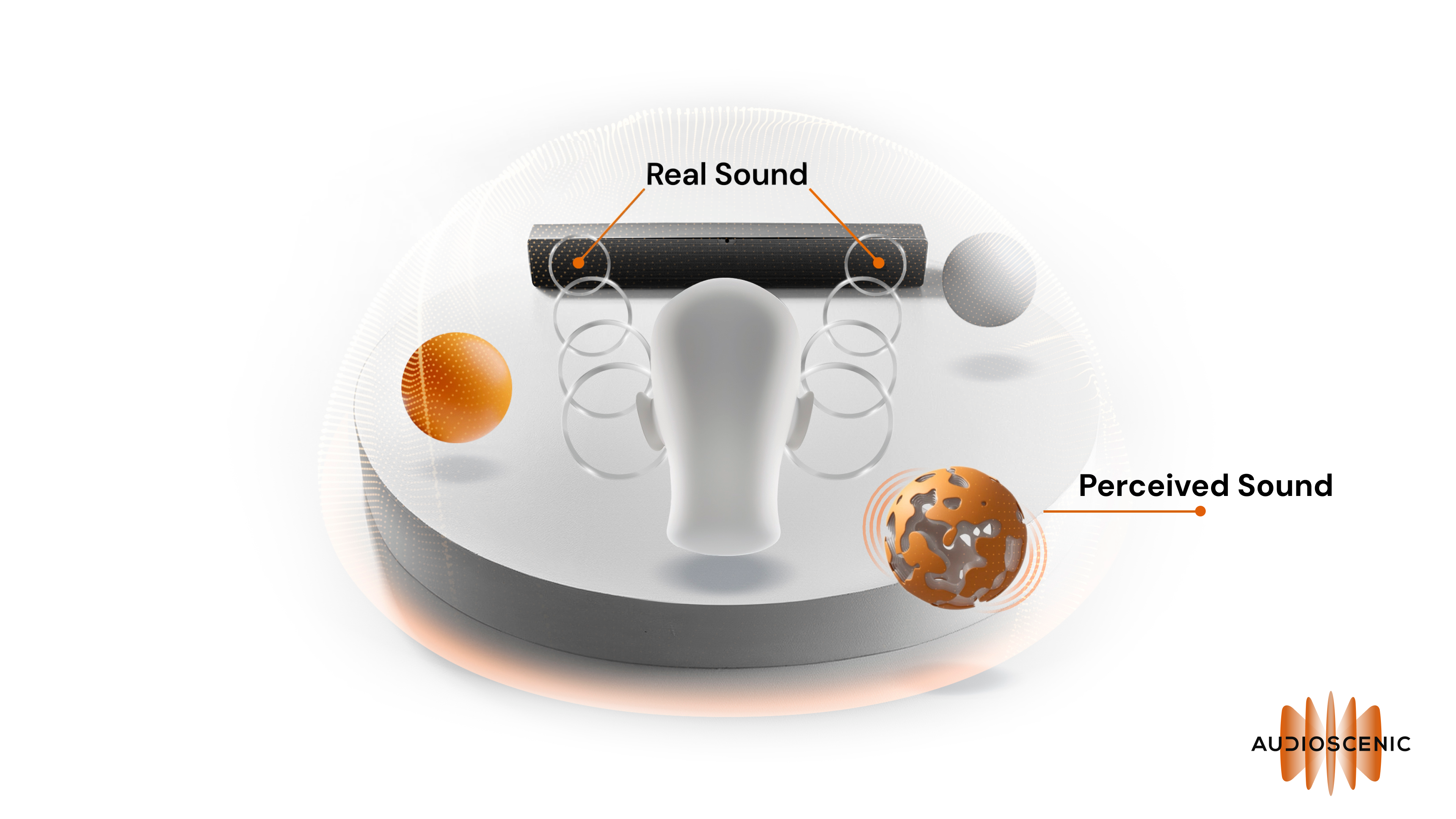
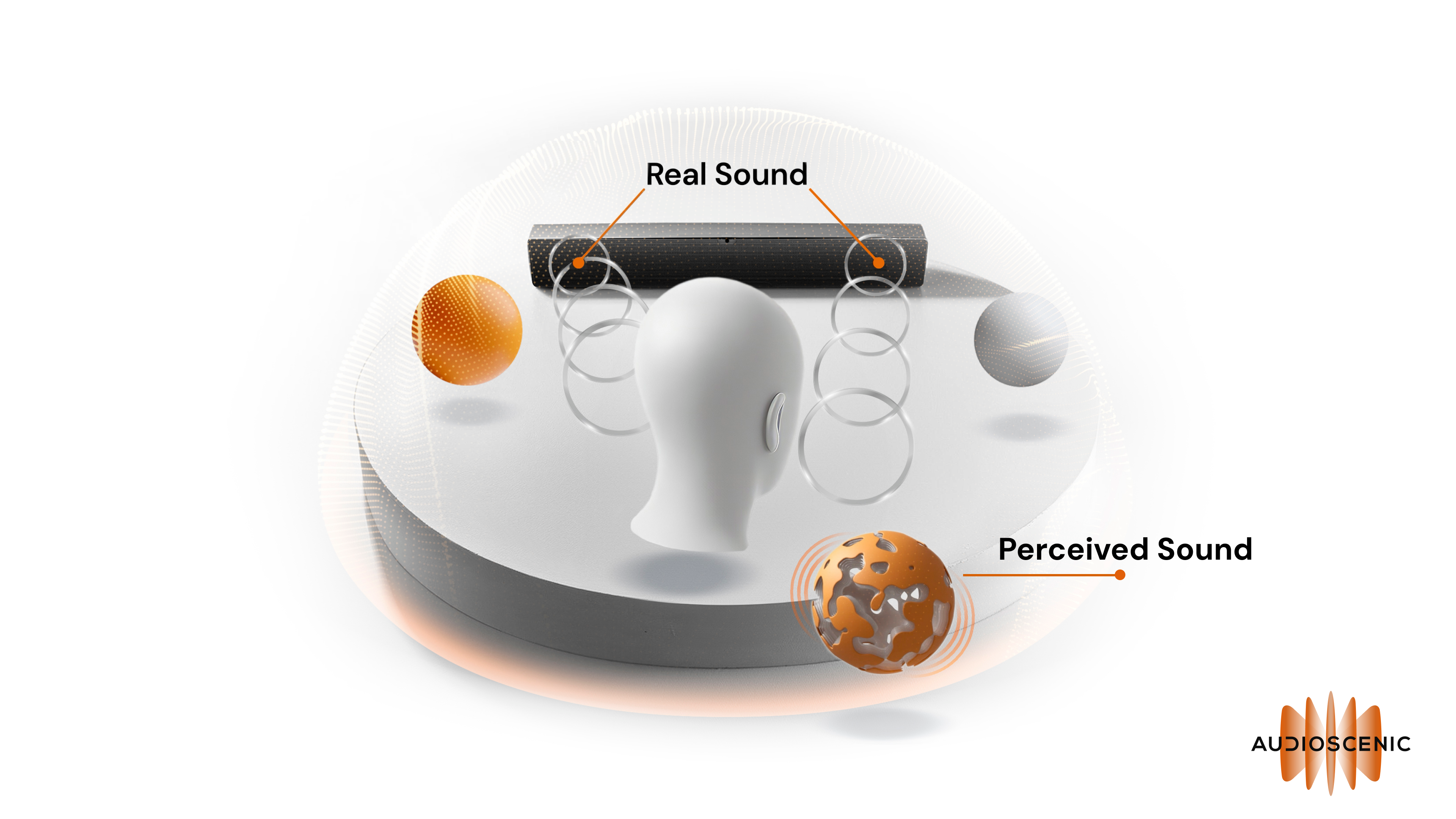
In movies, hear the dialogue and special effects as the director intended. In games, sense where the danger is coming from more instinctively, in a way that hasn’t been possible until now. “Revolution” is a bold statement, but this is more than an improvement in the quality of audio, it’s a natural sense of spatial awareness through sound – it’s as much about how you feel the sound as how you hear it.
At Audioscenic, we believe that the future of sound isn’t about bigger or louder, it’s about smarter.
It’s not sitting in the listener’s seat, it’s being transported by sound into a different reality, just as the musician or filmmaker or game studio intended.
Join the revolution: Sign up to our Newsletter for exciting updates.
